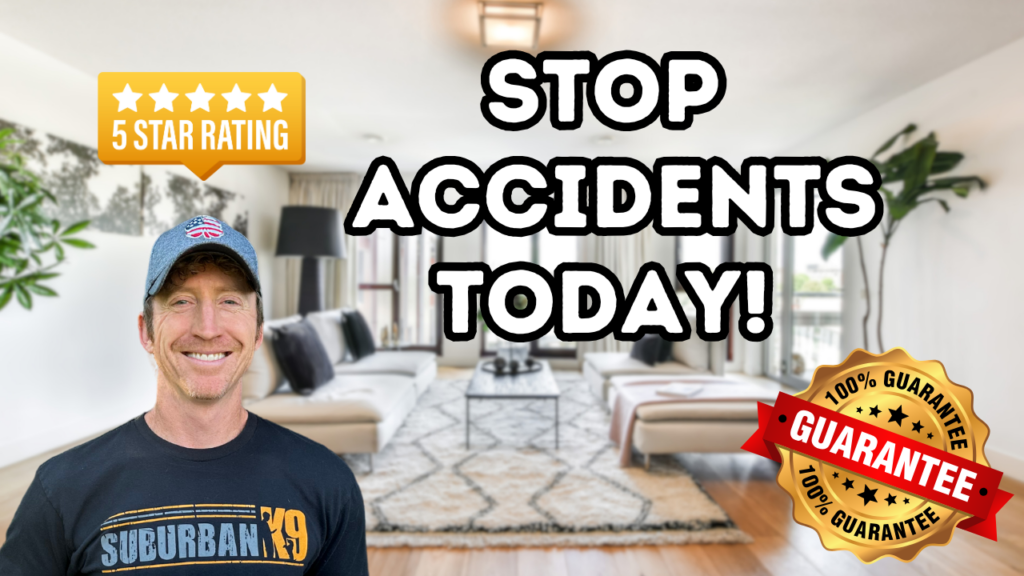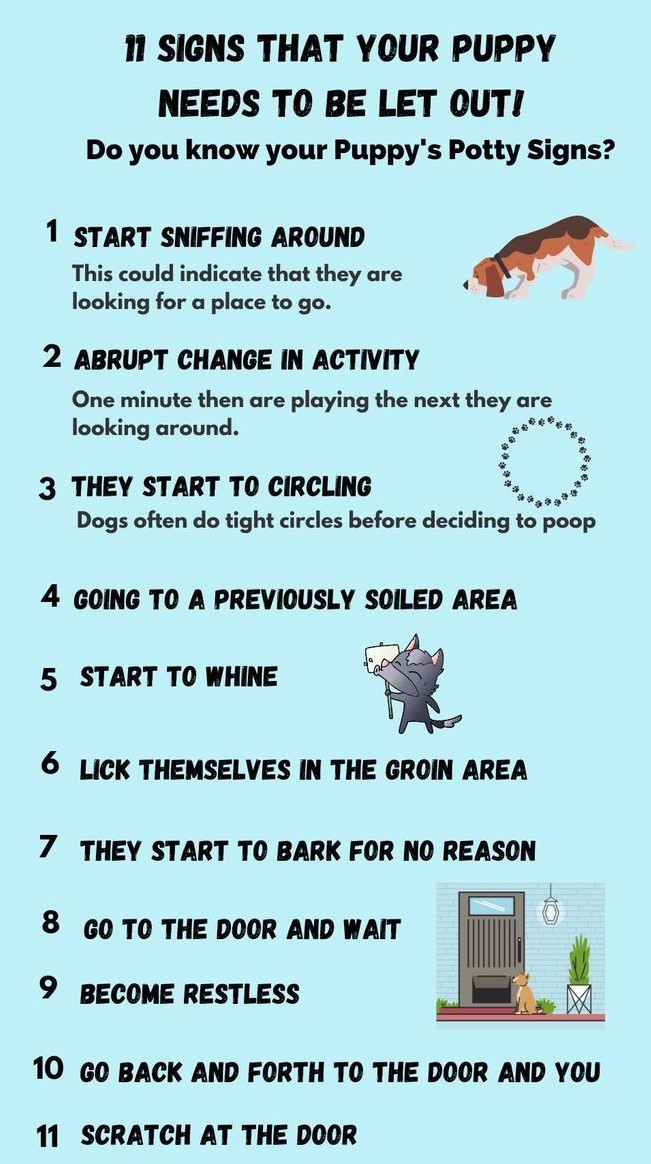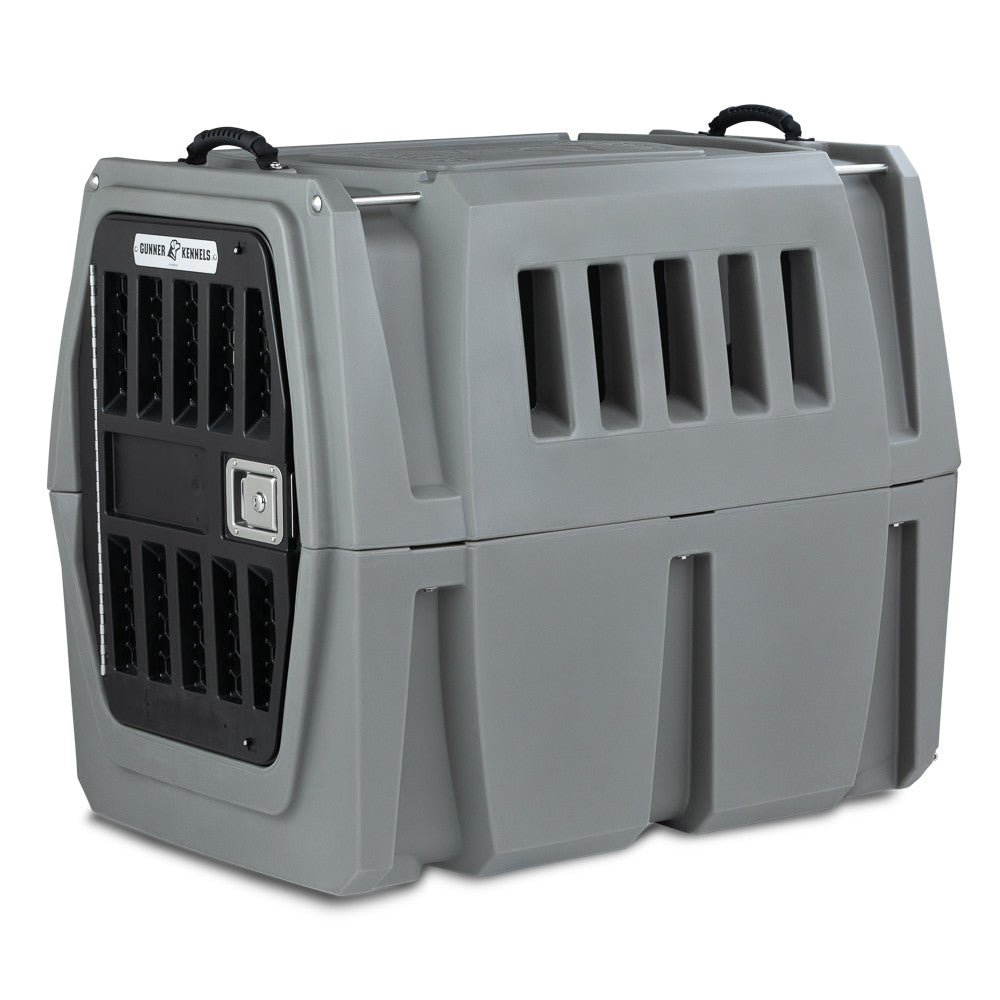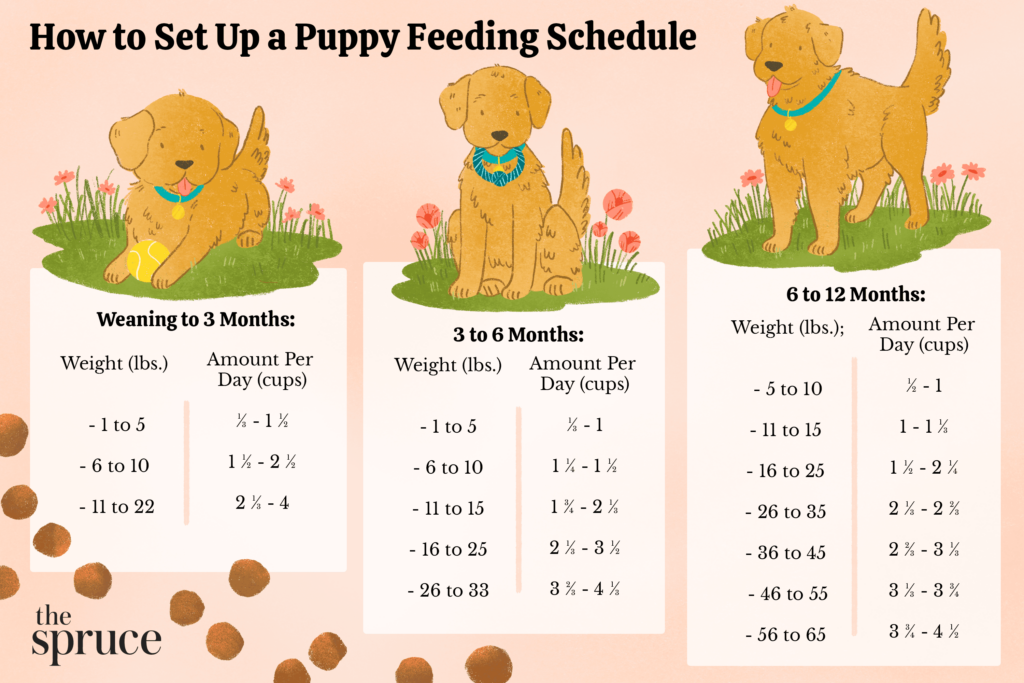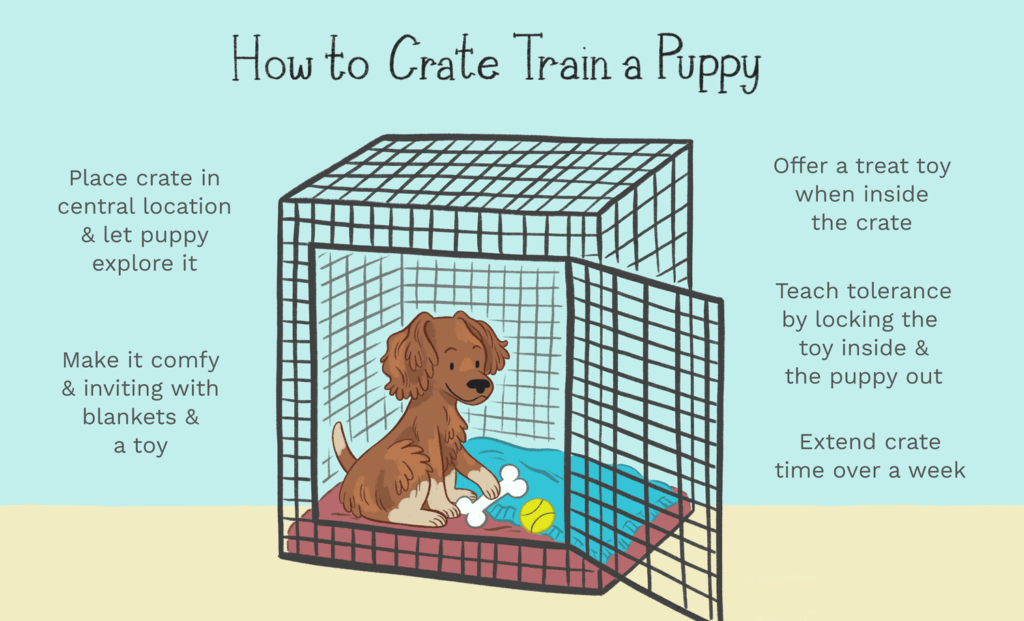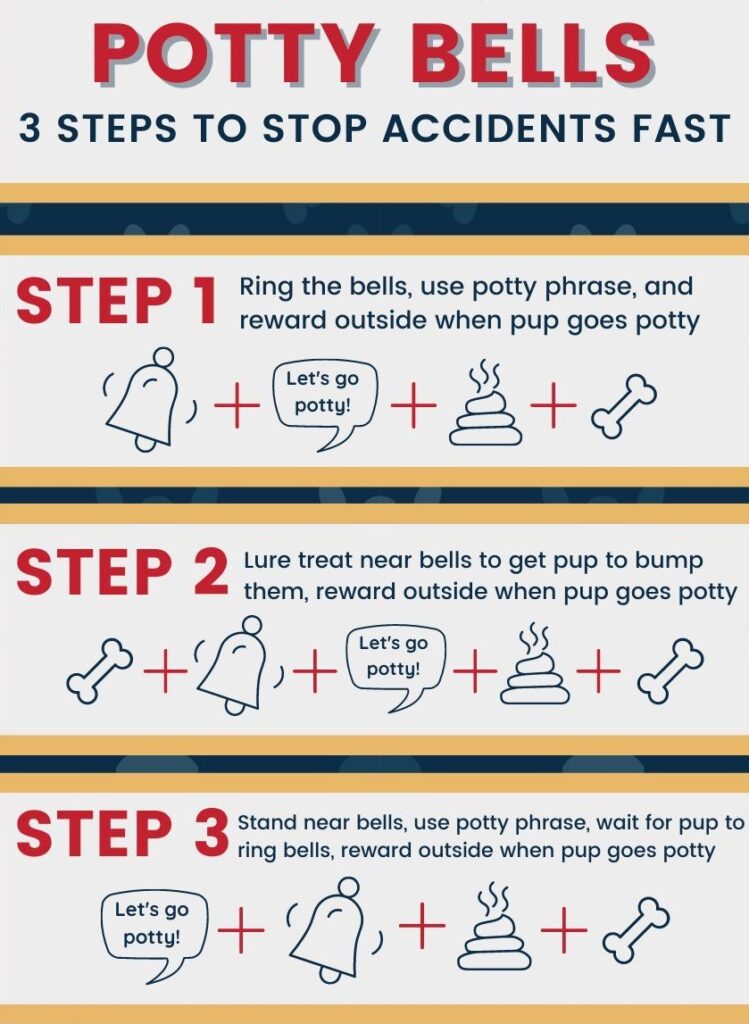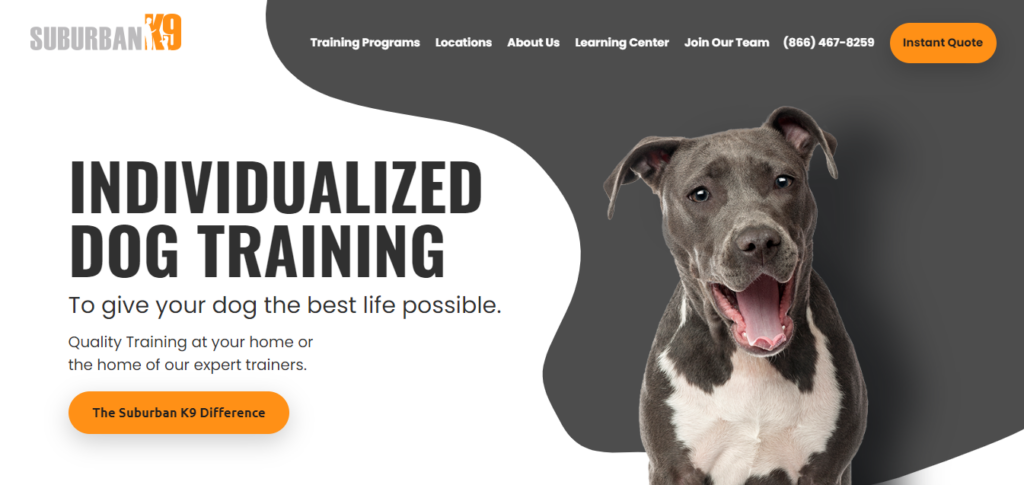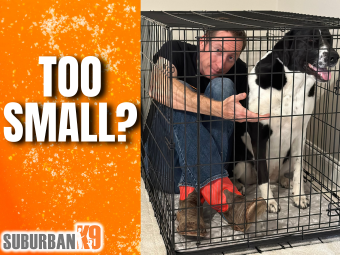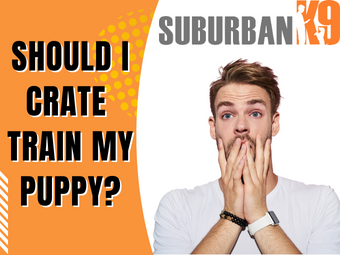How to potty train a stubborn puppy? The easiest way to potty train your puppy is to take our fully guaranteed virtual course. Click here for more information:
Our virtual potty training course is just $9.99 and contains hours of video lessons, written content, and a printable potty log. It takes all the guess work out of potty training your stubborn dog. If $9.99 seems like too much to spend, keep reading for our 13 tips.
The age-old struggle of trying to convince our furry friends that the great outdoors is where nature intended for them to do their business. This is the one problem every dog owner dreads because nothing beats coming home to a clean house and a happy pooch.
But what happens when your furry friend decides they prefer relieving themselves inside the house rather than outside?? Having a dog who goes to the bathroom inside the house is extremely frustrating and can make life difficult.
Fortunately, this guide will put an end to the never-ending game of ‘find-the-mess’ in your house. We will take you through 13 foolproof ways to get your stubborn pup potty trained once and for all. By the end of this 9-minute read, your pup will be well on its way to becoming the well-behaved companion you always knew it could be.
Potty Train Your Stubborn Puppy In No Time With These 13 Proven Techniques
Let’s take a look at the 13 tried and tested ways to potty train your dog.
If you decide not take our Potty Training Academy here are the 13 tried and tested ways to potty train your dog.
1. Schedule Regular Potty Breaks
Potty accidents happen, it's a fact of life, but the key to successful potty training is to minimize these accidents as much as possible. The best way to do that is to set up a consistent schedule for potty breaks.
When it comes to puppies, they have smaller bladders and less control over their bodily functions. This means that they need to go outside more frequently than older dogs. A general rule of thumb is that a puppy can hold their bladder for as many hours as they are months old.
So a three-month-old puppy should be taken outside every three hours. That being said, when you first get a puppy they don’t know that they are supposed to hold their bladder at all. They are used to peeing and pooping whenever they feel like it. For this reason, we recommend taking them out more often than needed to develop good potty habits.
Now let's talk about the actual potty schedule. It's important to establish a routine and stick to it as much as possible. Take your dog out at the same times every day – first thing in the morning, after meals, and before bed.
When you take your dog outside for a potty break, give them plenty of time to sniff around and find the perfect spot. This encourages them to go potty more quickly and efficiently. If they are too busy smelling and don’t go, it can be useful to put a leash on them and calm them down so that they focus. While on a leash, guiding them to walk in a circle can also speed up the potty process with some dogs. This is because dogs naturally perform this behavior when looking for a good spot to go.
Of course, accidents can still happen even with frequent potty breaks and a regular schedule. Try to take them outside more frequently in the future.
2. Constantly Supervise & Monitor Your Dog's Behavior
Constantly monitoring your dog's behavior is especially crucial for stubborn dogs or new puppies who are still learning the ropes. Keep a close eye on them at all times. Monitoring their behavior and body language will tell you when they need to go outside.
Notice any signs that they need to go potty. It could be sniffing around or circling or even whining. Dogs may bark or pace to get your attention and let you know that they need to go. Take them outside immediately.
Another important aspect of supervision is to keep your dog in a confined space when you can’t keep an eye on them. This could be a crate or a designated room but the idea is to prevent them from having access to areas where they might have accidents. A crate is almost always the best choice because it allows you to limit space. If a puppy has too much space they are likely to go to have a potty accident and then simply walk a few feet to a new spot to lie down and sleep. A properly sized crate can prevent this.
As your dog becomes more and more potty trained, you can gradually give them more freedom and trust them to be alone for longer periods. But do this gradually and only once they're completely potty trained.
If you're potty training a new puppy, remember that they will need more frequent potty breaks than older dogs. So you have to be extra vigilant and take them outside every couple of hours, as well as after meals and naps.
3. Use A Specific Command
Choose a simple command, such as "go potty" “go outside” or "do your business", and use it every time you take your dog outside to go potty. You can use any phrase that you would like, so make sure it is one that you feel comfortable saying. Your dog will start to associate the command with going potty.
It's important to start using the command as early as possible in the training process. Some dog breeds may have a harder time potty training than others so using a specific command can be especially helpful for those stubborn puppies. We often see that small breeds such as French Bulldogs are harder to potty train so you need to work extra hard with them.
When you take your dog outside to go potty, use the command in a clear and firm tone. Avoid using a playful or overly excited tone as it would distract your dog from the job. If your dog starts to go potty before you've given the command, it's okay to use the command in the middle of the process.
Over time, your dog will start to associate the specific command with housebreaking and may even start to give you cues that they need to go outside.
4. Set A Feeding & Napping Schedule
Pet parents often overlook the importance of setting a schedule but it can make a big difference in preventing potty accidents and helping your dog become fully housebroken. When your dog knows when to expect food and naps, they'll also start to anticipate potty breaks.
To start, determine how often your dog needs to eat and sleep based on their age and breed. Puppies generally need to eat more frequently than adult dogs so you need to adjust the schedule as your dog grows. Feed your puppy at least 3 meals a day (2 meals if it's an adult dog) and schedule naps or quiet time throughout the day to prevent over-excitement.
Dogs need plenty of rest to stay healthy and happy and a consistent sleeping schedule can also help with potty training. Make sure your dog has a comfortable place to sleep and try to keep their sleeping area consistent so they know when it's time to settle down.
As your dog becomes fully potty trained, start to adjust the schedule and extend the time between potty breaks.
5. Always Take Your Dog To The Same Place
Always take your dog to the same spot to do their business. This potty spot should be a specific area that your dog associates with going potty. It could be a corner of your yard, a designated area on your walk, or even a patch of grass in a nearby park. The important thing is that it's a consistent spot that your dog recognizes as the place to go potty.
Some dogs may be more inclined to use a specific potty spot if it's more appealing to them. Some people believe in adding a few toys or a unique scent to the area to make it more inviting. We don’t think this is necessary, but we are not opposed to the idea. Dogs are less likely to use a potty spot that's dirty or smells bad, so make sure to clean up any messes promptly and keep the area as clean as possible. Here are some items that are helpful in keeping your outside area clean:
- Swivel Bin & Rake: Great for large and small dogs.
- Odorless bin keeps the smell locked inside while also keeping water and bugs out.
- Dog Pooper Scooper with Adjustable Handle.
- Heavy Duty Bags: These poop bags are two times thicker than standard grocery bags.We know there are some discarded bags in every household, use our trash cans to save your budget.
- Easy assembly, Simple Storage.
- Dog poop bags for quick, easy pick-ups
- Neatly contains waste and minimizes odors
- Leakproof design keeps hands clean and protected
- Includes 300 unscented plastic bags (15 bags per roll; 20 rolls), a dispenser, and a matching leash clip
- Large 13 x 9-inch bag size for generous coverage
- Carabiner for clipping the dispenser onto a leash (leash not included)
- Plastic dispenser makes it easy to remove a bag from the roll during walks
Dogs thrive on routine and having a consistent potty spot can help them understand when it's time to go potty. Some people even go as far as making a custom dog potty spot out of gravel away from their grass. This gives the dog a specific spot and also keeps their yard looking its best. If you are making a potty spot for your dog and looking for an accessory that not only helps your dog, go to the bathroom but also gives the spot an awesome vibe check out this fake fire hydrant. Everybody knows that dog's love to pee on fire hydrants so why not give them what they are looking for. This is 14.5 inches tall and comes with stakes to hold it down in the yard. The perfect accessory to your dog's potty spot!
6. Use Crate To House Train A Puppy
Crate training is an excellent way to house-train a puppy. It teaches your puppy to hold its bowels and bladder and develop good habits for housebreaking. Your puppy's crate should be large enough for them to stand up, turn around, and lie down comfortably. However, it should not be too big or your puppy may use one end as a bathroom and the other end as a sleeping area.
Start to crate train the puppy by placing the crate in a common area of your home and leaving the door open so your puppy can explore it on their own. Encourage your puppy to go inside by placing treats or toys inside.
Once your puppy is comfortable with the crate, start using it for short periods. Place your puppy inside the crate for 10-15 minutes at a time, gradually increasing the duration as your puppy becomes more comfortable. The stay shouldn’t exceed a couple of hours in a stretch during day time and 6 hours at night.
When your puppy needs to go potty, take them outside to their designated spot. If they are not done within a few minutes, bring them back inside and place them in the crate for 10-15 minutes before trying again.
7. Limit Water Intake
When a puppy drinks water, it will inevitably need to go potty shortly after. By controlling their water intake, you can limit the number of times they need to go potty. This makes it easier to predict when they need to go and therefore easier to train them to go to the appropriate place.
Establish a routine for when and how much water they drink. Ideally, 1 ounce of water daily for every pound that they weigh. So offer water every couple of hours according to this calculation and take the water bowl away about 2 hours before bedtime. This will give your puppy enough time to drink and relieve themselves before settling in for the night.
It's also important to monitor your puppy's water intake and adjust it based on their individual needs. If you notice that they are drinking a lot of water and having accidents more frequently, limit their intake even further.
However, limiting water intake should not be taken to extremes. Your puppy still needs to stay hydrated and healthy so be sure to offer water regularly and never restrict it for prolonged periods.
8. Use A Potty Bell
If you're struggling with housebreaking your dog, consider a potty bell. It is a small bell that you hang near the door and use to take your dog outside for potty breaks. Choose a bell that's easy for your dog to reach and ring. It can be a small jingle bell or a bell attached to a ribbon.
Pick a spot near the door that you use to take your dog outside for potty breaks. Hang the bell from a doorknob or hook at a height that your dog can reach with their paw. Introduce your dog to the bell and encourage them to sniff the bell and paw at it. Repeat this until your dog is comfortable with the bell and associates it with going outside.
Whenever you take your dog outside for a potty break, make them ring the bell before you open the door. Once your dog rings the bell, immediately take them outside to their designated potty spot.
An alternative option is to utilize a doorbell mat. This is a mat that you place on the floor and it rings a chime when your dog sits on the mat. Much like the bell, you would have your dog go to the mat every time they are taken out to go to the bathroom. The advantage of this option is that you can have multiple chimes and they are louder than a normal bell, so you can hear them throughout the house
- Pressure Alarm: From deterring intruders with a loud alarm to letting you know when your pet wants a walk with a gentle chime, this pressure alarm mat is useful as a door mat, a pet doorbell mat, an alarm for sleepwalkers, or part of an indoor security syste
- Dimensions: The pressure mat alarm dimensions are 21.75 x 13.75, and is activated with a pressure load as light as 1lb per square inch
- Setup: Once youve inserted the 9V batteries (not included) and connected the mat to the 30 wired alarm unit, you can place this pressure sensor pad beneath a window, under a lightweight pet door mat to hear the comings and goings of your pets, or any other indoor space
- Select Your Mode: With three modes (Off/Alarm/Chime) to choose from, you can adjust your floor mat alarm to suit your home alarm system or welcome mat needs, and disable it entirely when the alarm mat is not needed
- Package Includes: Pressure sensor pad (mat alarm), alarm unit, mounting screws, and instructions
If you aren't going to go with the doorbell mat we recommend above, these potty bells are a great option. They easily hang from any doorknob and hang low so that they are easy for your pup to paw before going outside!
9. Use Puppy Pads
We don’t believe in using potty pads because they can make housebreaking harder and also end up giving the puppy less outside time since the pads are used instead of going in the yard. That being said, we know that many people like the idea of potty pads and often answer questions for clients on how they work.
Puppy pads, potty pads, or training pads, are all the same. These absorbent pads are designed to help with housebreaking your puppy. There are many different types of puppy pads available, including disposable potty pads and reusable potty pad options. Good puppy pads are highly absorbent. Consider the size of your puppy when choosing puppy pads.
Some puppy pads come with a scent to attract your puppy to the pad. While this can help get your puppy to use the pad, some dogs may be sensitive to the scent. Use unscented potty pads if your dog has a sensitive nose.
Choose a specific location in your home where you want your puppy to use the puppy pad. This could be in a laundry room, bathroom, or other easily accessible areas. Start with more than one dog pee pad but eventually transition your puppy to using just one pad in a designated location and then remove it altogether.
Place your puppy on the puppy pad frequently, especially after eating or drinking. Use a command like go potty to help your puppy associate the pad with the potty.
10. Use The Umbilical Cord Housebreaking Method
The umbilical cord housebreaking method is highly effective to housebreak your puppy. It involves keeping your puppy on a leash attached to you at all times when inside the house. Choose a lightweight leash that's comfortable for your puppy to wear. Attach the leash to your puppy's collar or harness and keep it on your wrist or belt loop at all times when your puppy is inside the house.
The ideal length of the leash for the umbilical cord housebreaking method is around 6 feet. This length is sufficient to allow your puppy some space to roam around but also keeps them within your reach and supervision.
With an umbilical cord, your puppy is under constant supervision and you’ll quickly recognize the signs that your puppy needs to go potty. This method works well when combined with other potty training techniques to create a solid routine for your puppy.
11. Housebreak Your Puppy With Potty Training Scent
- DOG TRAINING SPRAY: Our potty training spray for dogs makes house breaking easy
- HOUSE TRAIN WITH EASE: Shorten house training time for dogs of all ages with our easy-to-use dog spray for potty training
- SAFELY USE ANYWHERE: Our puppy training supplies are safe to use indoors and outdoors around children
- CONVENIENT:This dog potty training spray is both convenient and effective; with its easy-to-use spray nozzle
- MADE IN USA: Our house breaking potty training spray is proudly made in the USA, ensuring the highest quality and safety standards
We don’t generally use sprays to help with potty training, but there is nothing wrong with adding them to your routine!
A potty training scent is a specially formulated spray that encourages your puppy to go potty in a designated area. It mimics the scent of urine and feces and signals your puppy that this is an appropriate place to do their business.
To use a potty training scent, spray it on the area where you want your puppy to go potty. This could be a puppy pad, a designated spot in your yard, or any other area that you want your puppy to use. You can also spray the scent on a piece of paper or a cloth and place it in the designated area.
When your puppy smells the training scent, it will be more likely to go potty in that area. Over time, you can gradually reduce the amount of scent you use as your puppy learns to associate the designated area with answering nature’s call.
12. Patience & Persistence Is The Key To Potty Training
Potty training is frustrating; potty training is messy, but with the right mindset and techniques, you and your furry friend can succeed.
Remember that every puppy is different and will learn at their own pace. Some pick up on potty training quickly, while others may take longer. This is where patience comes in - stick with it and not get discouraged if progress is slow. Large breeds like German Shepherds, Golden Retrievers, Labs, and Bernedoodles are generally much easier to potty train than small breeds such as French Bulldogs, Miniature Poodles, Yorkies, and Maltese.
Persistence is also key. Establish a routine and follow it religiously. This includes taking your puppy out for potty breaks at regular intervals, using the same spot each time, and using the same verbal commands or cues. It may take a while for your puppy to fully understand what is expected of them but repetition and consistency will help them get there.
Another important aspect of patience and persistence is staying calm and positive throughout the process. Accidents will happen but getting upset or angry will only make things more difficult for both you and your puppy.
13. Get Professional Help
Sometimes, despite all your efforts, your puppy may still struggle with potty training and that's when professional help can come in handy.
Sometimes, medical conditions such as urinary tract infections or gastrointestinal issues can make it difficult for your puppy to hold its bladder or bowel movements. A veterinarian can help rule out any medical issues that may be contributing to your puppy's potty training struggles.
Suburban K9 is an excellent option if you're seeking professional help for potty training your puppy. Our expert animal behaviorist can identify any underlying behavioral issues that may be causing your puppy's potty training struggles. If your puppy is anxious or scared, it may avoid going outside or associate going potty with stress. With our in-home training, we will address these issues and develop a customized training plan for your puppy.
At Suburban K9, we offer our Potty Training Academy with hours of detailed potty training instruction. If working with a dog trainer in person is what you are looking for, we also offer private in-home lessons in which our team of experienced trainers provides guidance that will help your puppy learn where and when to go potty. Unlike solely relying on positive reinforcement, we use a balanced training method in our in-home training that ensures your dog learns the right way to behave, including when it comes to potty accidents.
One of the issues with relying solely on positive reinforcement is that your dog may never understand that there are consequences for not following the rules regarding housebreaking. However, with our balanced training approach, we enforce the rules and gently guide your puppy in the right direction without resorting to any inhumane techniques.
Our private in-home lessons aim to ensure that your puppy understands all the house rules related to potty training that you have established. Once your little puppy has a good understanding of these housebreaking rules, we slowly introduce an appropriate correction that will help them understand that the rules are serious business and they need to be followed.
How to Train a Puppy to Pee Outside
Initially, consistency is key. Establish a regular schedule for bathroom breaks, ideally after meals, playtime, and naps. Secondly, choose a specific spot outside and lead your dog there each time. This helps them associate the location with bathroom activities. Additionally, praise and reward your dog immediately after they've done their business outside, reinforcing positive behavior. Importantly, patience is vital. Accidents will happen, but it's crucial to remain calm and not to scold your dog, as this can create anxiety and hinder progress.
How to Train a Puppy to Poop Outside
Similarly, when it comes to training your dog to poop outside, a consistent routine is paramount. Begin by feeding your dog on a strict schedule to predict when they'll need to go. Then, utilize the same designated spot for bathroom breaks, as dogs prefer consistency and will learn to associate this spot with going to the bathroom. Remember to praise and reward them after they've successfully pooped outside. In the event of an indoor accident, clean the area thoroughly to eliminate any scent marks that might attract them back to the spot. As with all training, patience and positivity are your best tools for success.
Conclusion
Learning how to potty train a stubborn puppy isn't exactly the most glamorous job in the world. Nobody likes to furiously scrub the carpet or cover every inch of their homes with puppy pads. With patience, consistency, and a little bit of love, you can turn your stubborn pup into a bathroom superstar. So go ahead, put these strategies into action, and enjoy the peace of mind that comes with a well-trained pup.
We at Suburban K9 offer a comprehensive and effective approach to potty training which ensures that your puppy learns to behave appropriately both inside and outside the house. With our online Potty Training Academy you'll have a well-behaved and potty-trained puppy in no time. Or you could book a session now to see the difference for yourself.
The article above contains Affiliate Links from Amazon and other companies. If you visit their site and buy the product, we will get a small commission. Please know that we only recommend products we truly love and would never recommend a product we don't think is incredible. We look at and try hundreds of products before we ever recommend them to our clients!
